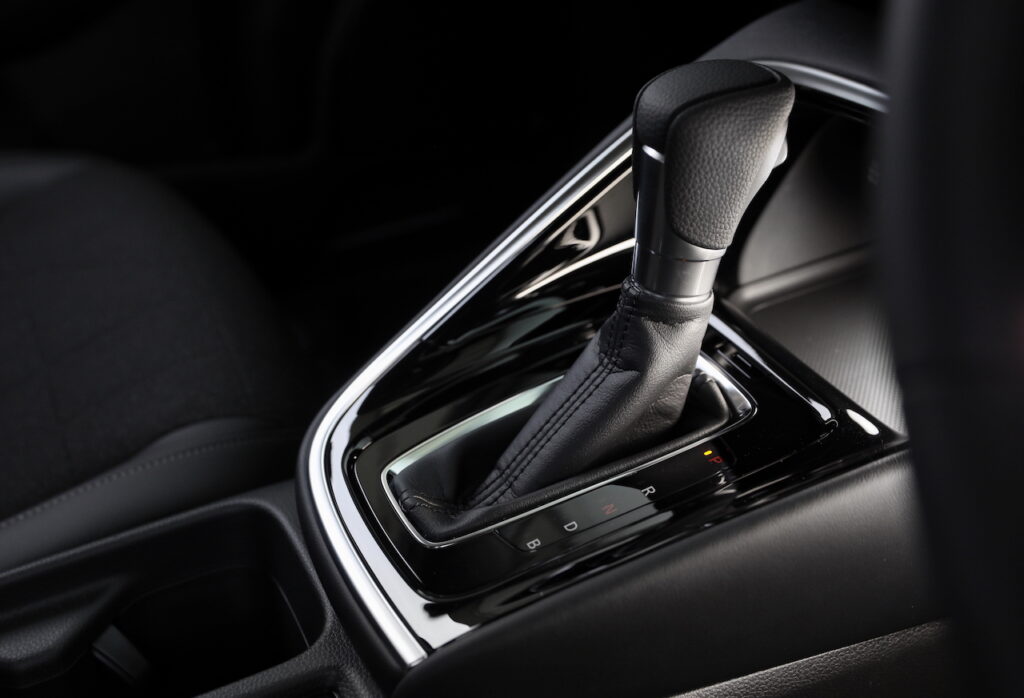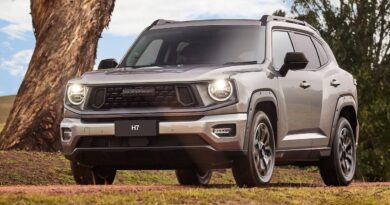Honda HR-V e:HEV L review
Globally, Japanese auto giant Honda is rushing toward an electric future. In Australia it’s not happening quite so fast, but the pace is picking up.
The latest proof is the Honda HR-V e:HEV L. It’s a petrol-electric hybrid five-door, four-seat (yep, we’ll get back to that) small SUV that is a direct competitor for the likes of the Toyota C-HR and Kia Niro.
The HR-V is the second model to get the hybrid treatment from Honda following on from the Accord large sedan. The Civic small hatch joins the party around October and an all-new ZR-V compact SUV will be added early in 2023.
Then comes an all-new CR-V family SUV with hybrid model and a new Accord (yes, with hybrid) by the end of 2023.
After that, Honda Australia says it will start seriously thinking about battery electric vehicles, as we reported here.

Value
At $45,000 driveaway the Honda HR-V is not a cheap small SUV.
A Toyota C-HR hybrid costs $37,665 plus on-road costs and will undercut it on the road. A Kia Niro is $39,990 plus ORCs and so more in-line in driveaway terms. Of course, orthodox petrol small SUV can be had much cheaper including Honda’s new HR-V Vi X priced at $36,700 drive-away.
But there are some upsides to consider with the Honda HR-V hybrid pricing. It’s now built in Japan, the home of mainstream manufacturing quality, rather than Thailand; it’s fitted with two forms of motivation and that always adds cost and it’s got an exceptionally attractive servicing offer.
Basically, the first five scheduled services (12 month/10,000km intervals) will cost you only $125. That’s bloody cheap.
But the up-front price is still reasonably hefty. It’s all part of Honda’s new agency retailing model, which sets no-haggle (read no discounting) prices and eschews the entry-level part of the market.

Equipment-wise there are some obvious omissions. The HR-V hybrid has got no power adjustment of the driver’s seat, the seat trim is a leatherette/cloth trim rather than full leather and there’s no spare tyre, just a deflation warning and a repair kit.
The audio system has six speakers, which is pretty basic. The Vi X only gets four speakers.
Speaking of four … the seats. Australian Design Rule 34 requires a child-seat top tether for every rear-seat seatbelt and as Honda couldn’t provide the former, it misses out on the latter.
Honda says it’s not too worried, arguing HR-V owners don’t use that middle-rear pew too often.
Equipment that does come with the HR-V hybrid includes 18-inch alloy wheels, a power tailgate with kick opening and auto close functions, smart keyless entry, push button start, dual-zone climate control and heating for the front seats, steering wheel and windscreen.
The infotainment system is controlled by a nine-inch touchscreen sitting atop the dashboard. Functions include wireless Apple CarPlay, wired Android Auto, Bluetooth, embedded sat-nav with over the air updates (free for five years) and FM, AM and digital radio. There are USB inputs both front and rear.
The instrument panel also upgrades to digital from analogue and the left-hand dial cycles through various powertrain and infotainment functions. Being a hybrid there’s no tacho. Commendably, a digital speedo sits prominently in the busy centre section. There is no head up display.
The HR-V comes protected by a five-year unlimited warranty and its lithium-ion battery has an eight-year warranty.

Inside the Honda HR-V hybrid
The Honda HR-V hybrid is particularly spacious in the rear seat for a small car. It has excellent knee and legroom and car accommodate two full-size adults comfortably.
The only compromise is headroom. Lean back into the headrest and a taller passenger will brush against the roofline, which takes a sharp cut downwards at just the wrong point.
The rear seat will split-fold completely flat or flip up out of the way. With the bench in place there is storage space underneath because the fuel tank sits under the front seat.
This position helps deliver a high and panoramic driving position that really helps the HR-V’s role as a nippy urban drive.
Up-front, the leather-trimmed steering wheel adjusts for reach and rake and the seat is large and quite supportive.
Trimmed in piano black the HR-V’s interior looks pretty good at first glance. Delve a bit deeper and it’s all pretty orthodox. For instance, there is a reasonable amount of stowage but nothing innovative.
At the other end of the car the boot offers 304 litres of space, which is average. But fold those Magic Seats – Honda’s name – and it balloons to 1274 litres. There is an underfloor bin as well, but most of the space is taken up by the lithium-ion battery pack.

Performance and efficiency
The Honda HR-V’s powertrain combines a 1.5-litre Atkinson cycle i-VTEC four-cylinder petrol engine, two electric motors and a lithium-ion battery pack.
The system produces 253Nm from zero to 3500rpm, as well as 96kW between 4000rpm and 8000rpm (yep, 8000rpm). By comparison, the petrol 1.5-litre Vi X makes 89kW and 145Nm.
As a result, it’s quicker off the line than any HR-V that’s gone before it, but a lethargic 10.6 sec 0-100km/h time is proof its impact is felt at lower speeds.
Thanks to a clever computer and some clutches, the HR-V hybrid can drive its front wheels via an e-CVT solely in electric mode, solely in petrol mode and in a combination of the two. The latter happens a lot.
There is no EV button so you get what the computer selects. A flow chart in the instrument panel shows what’s working when.
By the way Honda won’t say what size the battery is but it’s undoubtedly tiny, perhaps 1kW.
From our experience, the HR-V will stay in electric mode on a flat surface up to about 30km/h if accelerated moderately, but we did see as high as 60km/h. It can also operate as an EV at highway speeds on flat or downward slopes, sometimes very briefly.
Honda claims a 4.3L/100km fuel consumption average (the engine can take the cheapest 91 RON unleaded) and we saw a commendable 5.1L/100km on test. Combine that with the 40-litre tank and an 800km range is theoretically possible.

Charging
There’s no external charging of the HR-V hybrid. Like all Toyota hybrids it runs purely on electricity.
Electricity can be restored to the battery via the petrol engine-driven generator, an electric motor acting as a generator or when B (brake) mode is selected on the gear lever prompting regeneration via an electric motor when braking or coasting. See more on this in ‘Talking Point’ below.
A selectable graphic in the left-hand dial of the instrument panel provides a rough guide to battery’s state of charge.

Ride and handling
The Honda HR-V hybrid has long travel suspension that’s well tuned to cope with its 1382kg kerb weight. It’s a tiny bit stiff, but the upside of that is the car doesn’t roll too much in corners.
The ride remains very comfortable. That’s despite a quite basic MacPherson strut front and torsion beam rear suspension.
There is argument at this money for independent rear suspension.
The electric-assist steering doesn’t keep up its end of the bargain. It’s gluggy at highway speed and has too much friction when being twirled around a carpark.
That’s a pity because as we’ve already pointed out, the HR-V’s substantial height and compact size makes it an excellent viewing platform for the suburbs. It also helps it’s only 4335mm long and has an 11.3m turning circle.

Talking point
The Honda HR-V allows you to attempt some hyper-miling by pulling the gear lever all the way back to B mode. Then you can adjust the amount of regenerative braking effect through four stages via flappy paddles mounted on the steering wheel.
At its most pronounced there is substantial retardation, but it stops short of bringing the car to a sharp and complete stop. It’s more like 1.5 than one pedal braking.
You can also operate the paddles when not in B mode, but the effect is significantly reduced.
Throttle response can also be altered through three driver-selectable modes; default Normal, Eco (which also detunes the air-con) and Sport. It makes little appreciable difference.

Safety
Commendably, the new Honda HR-V has been substantially upgraded when it comes to safety.
Autonomous emergency braking (AEB) that operates at up to 200km/h and can detect pedestrians at up 100km/h and bicyclists up to 60km/h day or night is standard. That works hand-in-hand with adaptive cruise control with a stop-and-go function.
Lane centring, departure warning and mitigation, rear cross traffic alert, blind spot warning, traffic sign recognition with driver-selectable intelligent speed limiting and high beam support for the LED headlights are also part of the Honda Sensing package. The lane centring can be easily switched off if you find it intrusive.
Intriguingly, Honda only fits the HR-V with a new wide-angle camera and eschews a radar. Honda warns poor visibility (fog etc) could impact the camera’s ability to detect pedestrians and cyclists.
The HR-V hybrid also comes with front, front-side and curtain airbags but not the front-centre airbag many 2022 models are launching with.
Parking sensors are fitted front and rear and the reversing camera has dynamic guidelines. There is no front camera or 360 camera view.
When moving at slow speed the HR-V hybrid hums out an appropriately spacey tune to alert pedestrians of its presence.
The new HR-V is yet to get an ANCAP safety rating. The related European NCAP rating delivered only four out of five possible stars, stating restraint performance was “not as robust as expected”.

Verdict
Small SUVs are amongst the most popular vehicles sold in Australia today and the old second-generation HR-V was a good seller.
With less choice and higher prices to pay, the new HR-V won’t sell as well. But in hybrid form it is undoubtedly a better vehicle.
Highlights include the powertrain’s excellent fuel economy and decent urban-speed performance, a good ride provided by the chassis and versatile space offered inside.
But the up-front price is a bit of a challenge for such a small vehicle. Honda’s mulling a cheaper HR-V hybrid and it might be a more appealing prospect for your wallet if it shows up.
Honda e:HEV L specifications
Price: $45,000 driveaway
Basics: Petrol-electric hybrid, 5 doors, four seats, small SUV, FWD
Range: Not stated
Battery capacity: Not stated
Battery warranty: Eight years
Powertrain: 1.5-litre four-cylinder petrol, two electric motors
Power: 96kW
Torque: 253Nm
Energy consumption: 4.3L/100km
0-100km/h: 10.6 seconds




